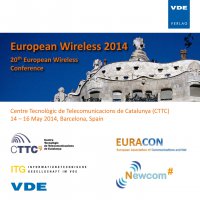Dijkstra Goes Social: Social-Graph-assisted Routing in Next Generation Wireless Networks
Konferenz: European Wireless 2014 - 20th European Wireless Conference
14.05.2014 - 16.05.2014 in Barcelona, Spain
Tagungsband: European Wireless 2014
Seiten: 7Sprache: EnglischTyp: PDF
Persönliche VDE-Mitglieder erhalten auf diesen Artikel 10% Rabatt
Autoren:
Koutsopoulos, Iordanis; Noutsi, Eugenia (Department of Informatics, Athens University of Economics and Business, Greece)
Koutsopoulos, Iordanis; Iosifidis, George (Center for Research and Technology Hellas, Greece)
Inhalt:
The upcoming device-to-device (D2D) communication paradigm will be game-changing for content distribution among wireless users. In this work we ask the following question: Assuming that mobile device owners are connected with social ties in a social network graph and that such information can be extracted by a wireless operator, how can the operator leverage the social network ties for efficient data transport? We consider a set of content sessions, each with a source and a destination. For each session, the operator needs to find the path from source to destination that minimizes total communication cost. The communication cost between each pair of nodes is the transmission delay (time delay per transmitted bit) between nodes, thus reflecting bandwidth consumption for the operator per unit of transmitted bit. The D2D forwarding paradigm grants the freedom to each node across to the path to accept the incoming traffic and forward it further or not. We model the probability that a node accepts incoming traffic as a function of its social ties with other nodes and we require that the solution results in a minimum probability of content delivery to destination. The problem is formulated as a constrained minimum-cost one and it is solved by an algorithm based on a Lagrangian relaxation. The performance of the algorithm is tested with real datasets that are used to create the communication and social graphs.


